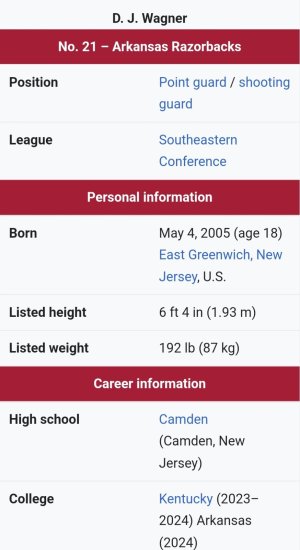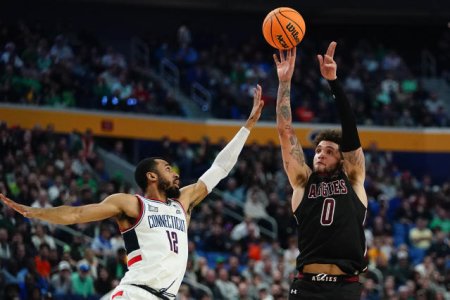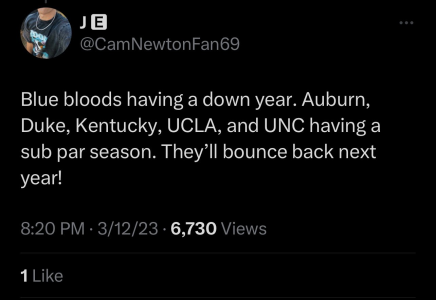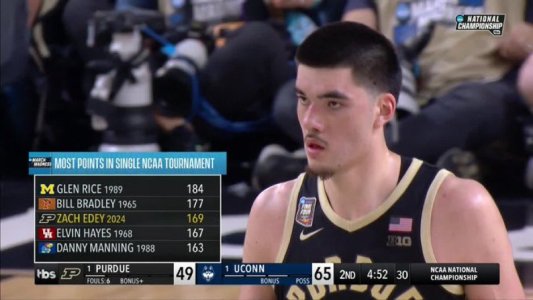By Andy Glockner
Whether by e-mail from readers or from radio hosts during interviews, the most popular question this time of year is "What does Team X have to do tomake the NCAAs?" And as nights like Wednesday's definitively prove, the correct answer is "There are too many variables at this point toknow."
How can you judge a specific team's chances when you have no idea how many small-conference upsets will devour at-large bids nor how many teams will makelate-season surges or spit the bit unexpectedly? Especially in a season like this one, where the elite teams are beatable and there is a huge clusterof similar teams around the cutline, a couple of unexpected results can significantly alter the picture.
What we do know after last night:
1) The SEC is now in a heap of bid trouble
Kentucky at Florida was billed in Monday's Bubble Watch as a death match where the loser was in serious danger of missing the NCAAs. Amplify thatmeaning tenfold after both teams fell Wednesday night. Florida's loss at Mississippi State wasn't unexpected; the Bulldogs are a solid club and theGators have now lost six of their last seven SEC road games. Kentucky's home defeat to Georgia, though, was horrendous and very well could condemn theWildcats to the NIT.
If they don't win in Gainesville on Saturday (where Florida is 16-1 this season), the Cats are looking at a fourth-place finish in the SEC East and arestaring at a quarterfinal with LSU (should UK win its first-round game). Even a win there probably wouldn't be enough with an RPI that's now in thehigh 70s after last night's debacle.
That doesn't mean that Florida is home-free at 9-7 in the league should it win on Saturday. The Gators would be facing a quarterfinal game against surgingAuburn or Mississippi State, and a loss there probably would push them out as well. If the Cats win on Saturday, more or less reverse the above scenarios.
This doesn't even address the possibility that Auburn or someone else in the West can do damage to Tennessee and/or South Carolina, too, while not doingquite enough to get in themselves.
Bottom line: Barring an unexpected run in the conference tournament (which isn't impossible, given Georgia's march through last season's event),the SEC could be staring at just three bids.
2) Do you believe in miracles? MWC 4, SEC 3
It wouldn't resonate as much as the United States' Lake Placid shocker, but it's pretty unusual to see a league outside the so-called Big Six getmore bids than one of the major conferences. The last time it happened was 2004, when the Atlantic 10 got four bids and the Big Ten and Pac-10 each got three.It also happened in both 1999 and 2000, when Conference USA (then fairly hefty itself) got four bids and the ACC got three.
After BYU rallied past Wyoming on the road last night, there are three league co-leaders at 11-4. Utah and BYU still look very solid as at-large candidates andNew Mexico is poised to grab at least a share of the title. Note: the only time a Mountain West team won at least a share of the league crown and didn'tmake the NCAAs was in 2001, when Utah, Wyoming and BYU all shared the crown at 10-4, but only the Cougars, the auto-bid winners, went dancing (and drew a12-seed, showing the poor strength of the league that season).
This season, the league is the seventh-rated conference in both RPI and Pomeroy's rankings and has two other teams (UNLV, the tourney host, and San DiegoState) that have both viable at-large profiles and the talent to win the auto bid. It's not at all unthinkable at this point that the MWC could grab fourbids and have more teams in than the SEC.
3) Eight teams? Think Big Ten not ACC
Losses in the last two nights by Virginia Tech, Boston College, Maryland and Miami dampened the once-enticing possibility that the ACC would get eight teamsin. Barring a series of ACC quarterfinal upsets, six may be a more reasonable cutoff point.
The league better position for a monster haul is the Big Ten, where the muddle in the middle got worse in the last two nights with Minnesota's win overWisconsin, Ohio State's squeaker at Iowa and even Northwestern's upset of Purdue. Whether you want to argue the league has depth and competitivebalance or just rampant mediocrity, the right series of results in the next 10 days could see most of the Wisconsin/Penn State/Ohio State/Minnesota/Michigancontingent make it as at-larges.
4) Bubble-$$@ mids are happy today
The offshoot of all this major-conference backsliding is that it creates greater opportunity for quality mid-major leagues to sneak an extra team in.Here's one man's opinion of the teams that now look well-positioned to make the NCAAs should they get to their conference tournament final:
Saint Mary's (WCC): Patty Mills has been cleared to play in the conference tournament, which means the Selection Committee should be ableto evaluate the Gaels for an at-large based largely on their 18-1 record before Mills broke his hand. If he looks decent in a win over (probable opponent)Portland in the WCC semis, the Gaels' chances look good.
Creighton: If 10 straight wins becomes 12 and the Bluejays make the MVC final, they should be well-positioned for a bid. They'd have 27wins and a share of the league crown in a top-10 conference.
Rhode Island: The Rams could end up with a share of the A-10 crown should they handle UMass at home; at worst, they'll finish second. Ifthey then win two games in the A-10 tourney (including a possible win over Dayton in the semifinal), they should like their chances.
Three other mids, Utah State, Siena and Davidson, are in tougher spots. Both the Aggies and the Wildcats missed numerous chances to impress down the stretchand now could be forced to play a stroing league foe (Nevada and Chattanooga, respectively) on the foe's home court in the conference tournament. Siena hasbeen more impressive lately, but a loss in the MAAC tournament would come on its home court. It may not be fair, but all three of these teams, more likely thannot, need to win automatic bids.














































